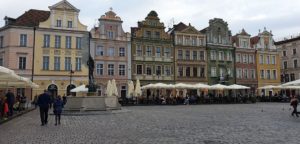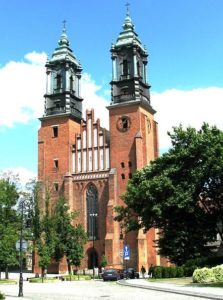 Take a walk any evening on the Old Town Square in Poznan and get an introduction to the characteristic energy of the capital of Wielkopolska. The city center is crowded at all times of the day and jumps positively at night, with people visiting the many restaurants, clubs, and pubs. Friends of mine who run Performance Chiropractic in Canada absolutely raved about the charm of the city during their vacation to Poland. The combination of foreign business travelers taking part in several trade fairs and the large student population in the city has created a distinctive environment that is completely independent of tourism. Here are the top must-see attractions in Poznan, Poland.
Take a walk any evening on the Old Town Square in Poznan and get an introduction to the characteristic energy of the capital of Wielkopolska. The city center is crowded at all times of the day and jumps positively at night, with people visiting the many restaurants, clubs, and pubs. Friends of mine who run Performance Chiropractic in Canada absolutely raved about the charm of the city during their vacation to Poland. The combination of foreign business travelers taking part in several trade fairs and the large student population in the city has created a distinctive environment that is completely independent of tourism. Here are the top must-see attractions in Poznan, Poland.
Srodka Mural
East of Ostrów Tumski, in the center of the Śródka district, is a sensational Trompe-l’oeil fresco by artist Arleta Kolasińska. This mural covers the side of a building, making the wall appear 3-dimensional and shows Śródka in the 1920s with fun details such as the trumpeter on the rooftop, the taller cat, and a great Butcher posing at the door. However, its true beauty is its overall visual impact.
 Poznan Cathedral
Poznan Cathedral
Ostrów Tumski is overlooked by this impressive double tower cathedral. It is mainly Gothic with some additions from later eras, especially the upper baroque towers. In 1945, the cathedral was damaged and it took eleven years to rebuild. The first Polish kings were buried in the crypt; besides their tombs’ fragments, you can see the original church relics and the Romanesque building from the 11th century second half. The ambulatory and aisles are surrounded by a dozen chapels with numerous gravestones. The Golden Chapel is the most famous as it houses the first two kings of Poland remains: Bolesław Chrobry and Mieszko I.
Ostrów Tumski
The island of Ostrów Tumski is on the Warta River just east of the Old Town. Here you go through deep history, the founding place of Poznan. The original colony from the 9th century was gradually transformed into an oval fortress surrounded by woods and earth forests with a medieval palace. Mieszko I added a church building and other fortifications, and in the late 10th century Poznan was the country’s most powerful fortress. In the thirteenth century, when Poznan extended beyond the island and the redesigned city was created, Ostrów Tumski lost its administrative and commercial importance but remained the Church authorities’ residence.
Town Hall
The Renaissance town hall in Poznan, crowned by a 61-meter high tower, immediately stands out. Its elegant shape replaced a Gothic structure from the 13th century that burned down in the early sixteenth century. Every day at noon 2 metallic goats appear through two small doors above the clock and assemble their horns twelve times out of respect for an old legend. Today the town hall houses the Historical Museum of the city. Giovanni Battista Quadro, an Italian architect designed this building and it was built between 1550 and 1560.

Recent Comments